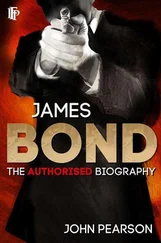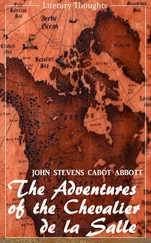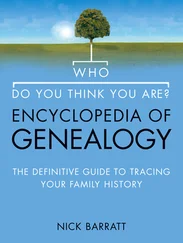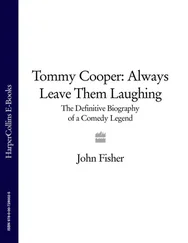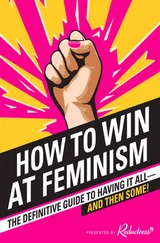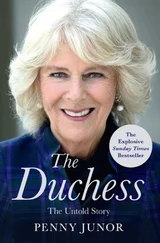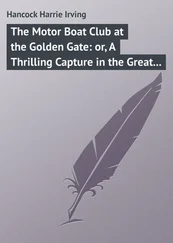If any physical aspect defined the man it was his feet. He had the exact measure of them. ‘My feet don’t seem to be with me,’ Tony muttered to one interviewer. ‘They’re living a separate existence. They’ve been put on all wrong. They don’t join the ankle properly. Sometimes they feel as if they’re flapping like penguin flippers.’ Poise was never on the agenda at the comic academy, but it irked him just the same. ‘Let’s face it,’ he admitted to his friend Philip Oakes, ‘I look odd.’ When Oakes’s basset hound produced puppies he refused the offer of one as a pet. Someone had pointed out the similarity between his own feet stuck at their quarter-to-three position and the splayed paws of the animal. ‘Can you just see us trotting along together?’ he queried. ‘They’d be entering me for Cruft’s next.’ If his feet were something of an obsession with Hancock, Galton and Simpson were only too happy to latch on to the characteristic. In one episode, having failed the driving test for the seventy-third time, Hancock protests, ‘Me feet are too big – that’s the trouble. They overlap. I put me foot on the brake, half of it goes on the accelerator as well and we’re off again!’ On another occasion Sid James surprises Tony with his nickname from the time he supposedly served in the Third East Cheam Light Horse, ‘Kippers Hancock’. He is nonplussed that Sid could have known this, but as James explains, ‘With your feet what else could they call you?’ They were, in fact, a normal size 8½ and the man, not his writers, should be given the final word on the subject: ‘I feel as though I’ve got the left one attached to my right leg and the right one attached to the left leg. Quite horrible. If you examined my feet closely, you would see they were only good for picking up nuts.’
Jacques Tati claimed that comedy begins with the feet up, and if so Hancock might appear to have had it made from day one. The fact remains, however, that his greatest physical asset was his face. What his body lacked in definition was compensated for by the quicksilver precision of his features, capable of conveying every single nuance of the human condition with ease. Boredom, frustration, worry, exasperation, misery, insomnia, complacency all became funny when Hancock registered them, not least because of the skill with which he could appear so effortlessly to pick them out of the ether. At odds with the sagging jowls and the baggy eyes, he could transmit the subtlest thought with a simple twirl of a lip, the merest quiver of a cheek. On occasions the eyes defied you to tell him what he was thinking. You knew and laughed and he didn’t even have to speak. In many ways he was sited on a line equidistant between Chaplin and Buster Keaton, combining the chameleon flexibility of one and the abstract quality of the other. The unfortunately named ‘stone face’ of Keaton, upon which cinemagoers were able somehow miraculously to project their feelings, may have something to do with it. However, the comic effect he could achieve with the laugh that simmers, the frown that explodes, the word unspoken that came to the tip of his tongue to be swallowed almost instantly were totally Hancock’s and Hancock’s alone.
His facial prowess made him absolutely right for the emerging medium of television, but that fact only serves to underline that Hancock’s initial claim to attention was as a radio presence. At all stages of his career it helped that he had a voice that sounded as he looked. As we shall discover, the Hancock of Educating Archie sounded totally different from that of the performer remembered today. His microphone voice became modified considerably over the years, but once it found its natural level, consistent with the naturalism he and his writers were anxious to cultivate in comedy, it was hard to imagine him speaking in any other way. Plump, rounded and listless, given to sudden explosions of protest or triumph, it conveyed everything about the look and the attitude of his complex character. The emphatic caution with which he pronounced the aspirates of the title of his show – ‘H-H-H-H-Hancock’s Half Hour’ – dated from the very beginning of the radio show in 1954 and the device became a vocal calling card that firmly set the mood for each episode.
It is a paradox of the Hancock phenomenon that while he remained indisputably recognisable, understandably inimitable, he nevertheless proved well-nigh impossible to impersonate. The irony of the last radio script that Galton and Simpson wrote for him is that it revolved around the premise of someone who could do so successfully and in so doing take from the character profitable work in a television commercial that the lad deemed beneath his dignity. In this episode, the variety impressionist Peter Goodwright made a fair stab at the task and succeeded to a degree, but something was missing, even in sound alone. In later years Mike Yarwood would don the Homburg and astrakhan collar, but the impression always seemed stillborn, lacking the freedom and joie de vivre that he and others achieved with the likes of Cooper, Dodd, Morecambe, Howerd and all the other comic icons from and around the same period. The answer may reside partly in public perception. In Cooper and company we – and that means Yarwood on our behalf – saw uninhibited Masters of the Revels to whom in a Saturnalian moment we all wished to aspire: who hasn’t waved an imaginary tickling stick, or donned a makeshift fez and, arms outstretched, fumbled his way through a cursory attempt at ‘jus’ like that’? On the other hand, in Hancock we saw our basic selves and perhaps thought best to leave well alone. The subtler, lower register of the Hancock voice did not help either, nor did the depth of the character as portrayed by the writers who shifted the personality of the man they knew up a gear or two to bring about their marvellous shared creation. It is ironic that one of the weaknesses of that character should be an irresistible urge to drop into impersonation at the drop of a hat, in his case the Chevaliers, Laughtons and Newtons of a bygone Hollywood age.
For all Hancock would cling to exhibitionist tendencies fashioned in another era, no comedy show caught more astutely the social history and culture of its own day, as its hero came to terms with the new prosperity to emerge from the post-war gloom, the new consumerism, the new media consciousness. Its only contender to any sort of crown in this regard was radio’s The Goon Show , the anarchic comic explosion that sounded like a verbal hybrid of freak show and firework display played out in celebration of our accumulated imperial past. But for all its energy, invention and a three and a half year start, it was less accessible than Hancock’s Half Hour and, in spite of varying attempts, had the disadvantage of being impossible to translate to television. It needed to be heard. Its four original chief protagonists – Michael Bentine, Spike Milligan, Harry Secombe and Peter Sellers – had recently, like Hancock, been catapulted out of the armed forces into performing careers that would have seemed impossible when hostilities began. All knew each other socially. If one concedes to Milligan the creative advantage, it is feasible that had the comedy pack been shuffled in a different way Hancock could have ended up in the first show in lieu of one of the other three performers. Both programmes shared the same producer, the wiry and dynamic Dennis Main Wilson, and Milligan’s co-writer in the early days, Larry Stephens, was an even closer friend of Tony and the author of the bulk of Hancock’s stage material. Moreover, Hancock had still properly to formulate his views on naturalism in comedy, a quality that amounted to anathema in the parallel universe of the Goons. Both shows in their contrasting ways drew regular comic inspiration from the folk memory of a conflict that now seems so distant and yet in those bleaker times loomed like an unwelcome ghost in people’s lives.
Читать дальше

